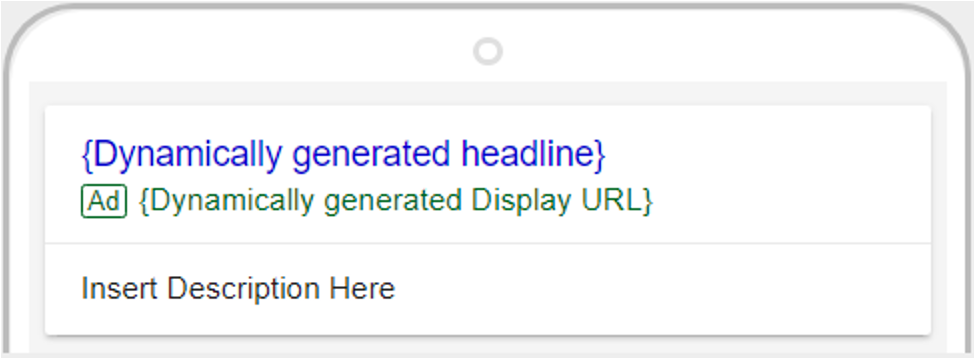“What are the different types of ads to use on Google Ads?” The article explores the three primary types of Google Search Ads and delves into their respective benefits and drawbacks. Expanded Text Ads (ETAs) provide message and structure control but may require more time to create. Responsive Search Ads (RSAs) offer a dynamic format that allows Google to adapt ad text based on performance data, though testing and analyzing individual components can be complex. Dynamic Search Ads (DSAs) automate ad creation and keyword selection based on website content, emphasizing traffic generation over conversions. ETAs are dependable yet time-intensive, RSAs enable optimization with some testing challenges, and DSAs prioritize traffic over conversions with limited control over ad content. Each type presents unique considerations for ad performance and strategic planning.
Google Ads are a common practice within a digital marketing strategy. And even if the Google solution suite is large, there is no question that the Search function is the most popular. There are several ad options available, but not all are suitable for everyone. Let’s examine the three kinds of Google Search Ads as well as their respective advantages and disadvantages.
The three kinds of Google Ad formats have the same characteristics:
Depending on the auction’s competitiveness, the space available for the target keyword and your bidding strategy, your Headline 3 and/or Description 2 may not appear.
Expanded text ads (ETA)
This is the most classic ad format, which all newbie advertisers use at first. And for good reason. However, more advanced professionals should definitely not turn their backs on this format.
The ad will be static. The text entered into the platform will appear exactly the same on Google. In fact, you can see how with this ad format, you have absolute control of the message and its structure.
There is nothing wrong with this kind of ad, as it is a sure bet. The post-campaign analysis is done very quickly; just like the optimizations during the campaign. However, ensure that all of your related large-size ads point to the same landing page.
Unfortunately, these ads take more time to write in order to create an attractive, readable and engaging ad. Writing a good Google ad is a long process and takes some experience. Not to mention the fact that you’ll want several versions of the same ad, which could then lengthen the work required.
Responsive search ads (RSA)
This is a more advanced and semi-automatic format of large-size ads; it is a dynamic ad format. Google will combine, as it sees fit, up to 15 headlines and 4 descriptions that you have previously provided. Of all the possible variations, Google will determine which headlines perform best in Positions 1, 2, and 3 as well as the winning combination of headline and description.
The advantage of this format is the fact that Google optimizes the texts according to its placement (mobile ad versus desktop ad) as well as what the system thinks is the most effective.
There is obviously a condition to this function: each headline and description must be original and offer a different value from each other. If Google deems them to be too similar, it will simply ignore their existence.
In fact, writing an ad becomes a bit more complex: all the combinations must provide a common understanding without being redundant, while ensuring that each element is sufficiently distinct from each other. Creativity is therefore paramount in this exercise.

Source : Webit Interactive
Even if the format seems to lend itself to it, a responsive ad is not the best solution to use to perform your tests. First, because Google will not tell you which great title or description performed the best, conducting an analysis close to impossible. While you will know the ad’s overall performance, you’ll be unable to determine which element of your ad had the best click-through rates.
If you want to know what kind of text and incentive earns you the most clicks, you will have to perform these tests with large-format ads and not responsive ads. A responsive ad will give you all its power when nurtured by headlines and descriptions that have already been proven and generate conversions. In this case, you can look for lower CPCs, a higher volume of impressions, and a better click-through rate. The use of responsive ads therefore does not exclude large format ads. On the contrary, you are encouraged to use both.
Dynamic search ads (DSA)
Let’s take automation a step further. This time, Google writes your ads while making its own selection of associated keywords. In other words, you don’t have much left to do. Google uses information from your website to auto-generate ads. It then uses that same content to choose which keyword will trigger the ad. This type of advertisement is focused on content and a theme, rather than an intention dictated by a keyword.
The primary goal of dynamic ads is above all traffic and not conversion, unlike the two aforementioned ad types. The advertiser will therefore be able to attract a large volume of clicks with less effort—all while targeting its entire website.

Source : Conversion Works
However, if no effort is made to create an ad, you have to ensure that you have impeccable SEO on your website. Your website’s pages must be extremely well-written and with a clear structure that fully complies with good organic SEO practices. In fact, these ads are not suitable for small websites with tight budgets.
Furthemore, dynamic ads have a great deal of unpredictability in both results and the ads themselves; an advertiser has no control over what content is posted in their ad or when it will be visible. For these reasons, there is no way to qualify incoming traffic.
Now that you understand the ins and outs of Google Search Ads, which strategy will you adopt for your company?
For some help in the field or simply to hire a certified agency, contact us!
